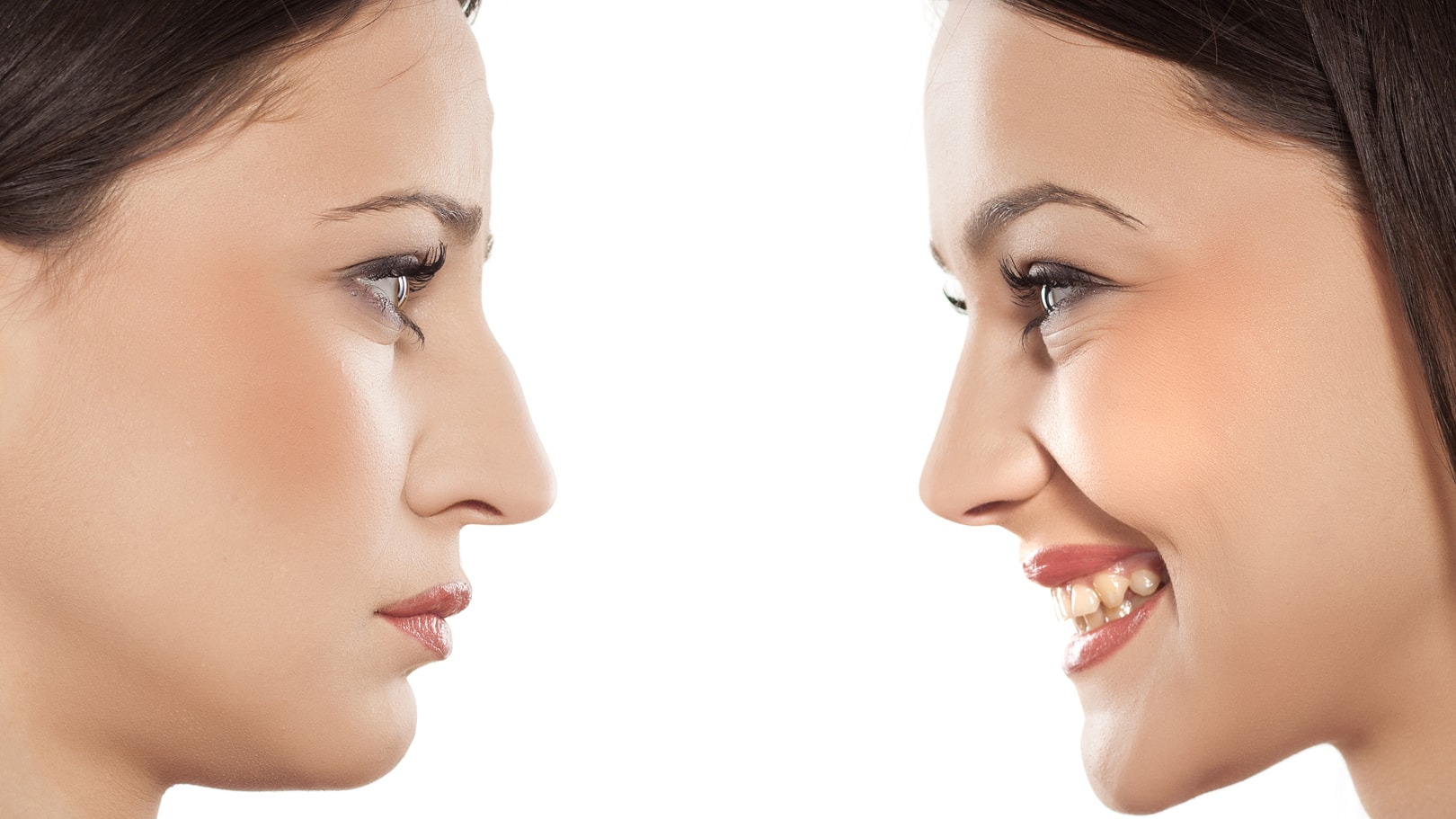

Adolescence marks the beginning of the transition to adulthood and brings about many changes in the body. Due to the insecurities of the teenage years, many teens decide to enhance their appearance through cosmetic procedures such as rhinoplasty. Aside from aesthetic concerns, patients want adolescent rhinoplasty to address changes in the nose due to trauma or injury.
Females, around the age of 13, see their face start to grow very quickly. Bones and nose cartilage grow at different rates and this may result in a deviation of the nasal septum. This makes the nose not look straight from the outside and it also causes nasal obstruction. Therefore, difficulty with nasal breathing is also a main reason for having rhinoplasty during adolescence.
Patients who are GOOD CANDIDATES for adolescent rhinoplasty are:
Adolescents that are NOT GOOD CANDIDATES include:
Adolescent rhinoplasty, or rhinoplasty in general, is performed as:
The surgeon modifies parts of the nose such as narrowing the bones of the nose, lowering their height if there is a hump, or adjusting the tip of the nose to make it more compatible with the structure of the face. Overall, the surgeon performs structural changes to give the nose a better aesthetic appearance.
For a primary patient, who is someone who has never had a nose job before, the operation may be done with either an open or closed approach. The choice ultimately depends on the necessary maneuvers for the desired results. In revision cases, the correction might be a little easier if performed with an open procedure. However, minor revision procedures can still be performed with a closed approach.
The main difference between adult and adolescent rhinoplasty is the type of patient rather than the procedure itself. Adolescent patients are more enthusiastic about the operation. They are excited to see improvements at such a crucial point in their lives. Adolescent patients are more likely to have the operation for both functional and cosmetic reasons while adults request it for medical/functional purposes with the expectation of subtle cosmetic improvements. Self-image is very important to younger patients so they tend to focus on results that match their desired self-image. Adults usually have an established social network and career which makes them less reliant on their looks so they desire subtlety for their final results.
Each nose is unique and must be evaluated by a surgeon to formulate a treatment plan. In general, rhinoplasty can be classified as:
Septoplasty is performed to correct a deviated nasal septum. The external nasal framework does not cause additional nasal obstruction and only septal correction is necessary.
The cost of adolescent rhinoplasty depends on the type of rhinoplasty performed by the doctor, the area of the country where it is performed and if the cost is covered by insurance. Some of the cost might be covered by insurance if the procedure is determined to be medically necessary. In general, the cost ranges from $5500-$18,000.
The RECOVERY for open and closed rhinoplasty is the same. The only difference is that, in the open approach, there will be a small scar at the base of the nose which is not visible from the frontal view. The sutures will be removed in 5 to 7 days. The scar will fade away nicely after approximately three months. There may also be some swelling of the nasal tip, because of the incision located there, but it will resolve after a small period of time. During the first week of recovery after rhinoplasty to address breathing issues, the patient should expect some kind of nasal obstruction. During the one week post-op appointment, the surgeon will take out anything placed in the nose to protect it as well as clean the nose to allow full breathing capabilities.
The DOWNTIME for adolescent rhinoplasty is usually a day or two. After a few days, the patient should be able to return to a semi-normal lifestyle while wearing a nasal cast. Bruising and swelling may still be present around the eyes and nose for 7-10 days. Heavy lifting is strictly prohibited for about 2 to 3 weeks. After one week, the cast is removed and the patient can return to work if he, or she, is comfortable with residual swelling. This residual swelling will greatly improve over the course of the next 2 weeks.
As long as the patient is the right age to undergo rhinoplasty, there should not be any growth changes that impact the results. The results should be long term if a structured rhinoplasty procedure is performed and no trauma occurs after the procedure.
The main limitation of adolescent rhinoplasty is the age of the patient. As mentioned above, patients must be 16 years old for females and 17 for males. At these ages, the growth of the face has stabilized and surgery can performed with long term goals in mind. Operating on patients younger than these ages only increases the chance for a revision surgery in the future since the face continues to grow. There will be more complications down the line if the patient is younger than what is indicated. There are exceptions if the need for surgery is the result of trauma to a younger patient.
Some of the more common risks of adolescent rhinoplasty are:
Due to its prominent position on the face, the nose tends to get a lot of attention from others. Teenagers who are not happy with the appearance of their nose can develop self-esteem and self-confidence issues. Adolescent rhinoplasty is a good option for patients who have reached the age where the nose has stopped growing. Adolescents interested in having rhinoplasty should consult with a board-certified surgeon who can examine their nose and determine if rhinoplasty is the ideal option to address the appearance of the nose.
Written by Cosmetic Town Editorial Team- MA
Based on an exclusive interview with Karan Dhir, MD in Beverly Hills, CA